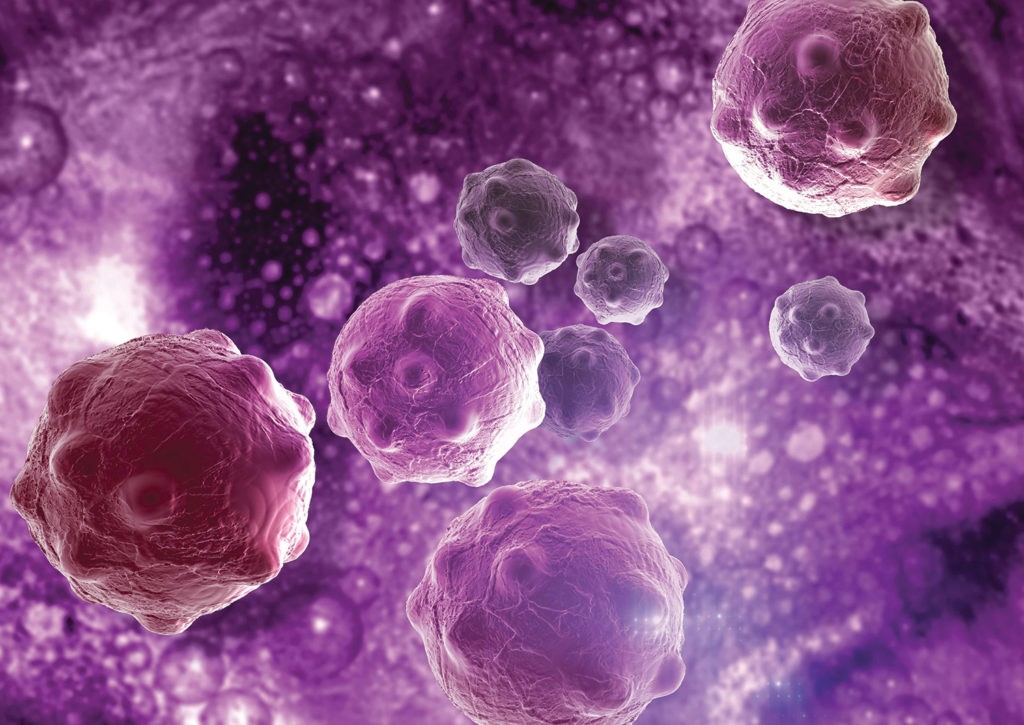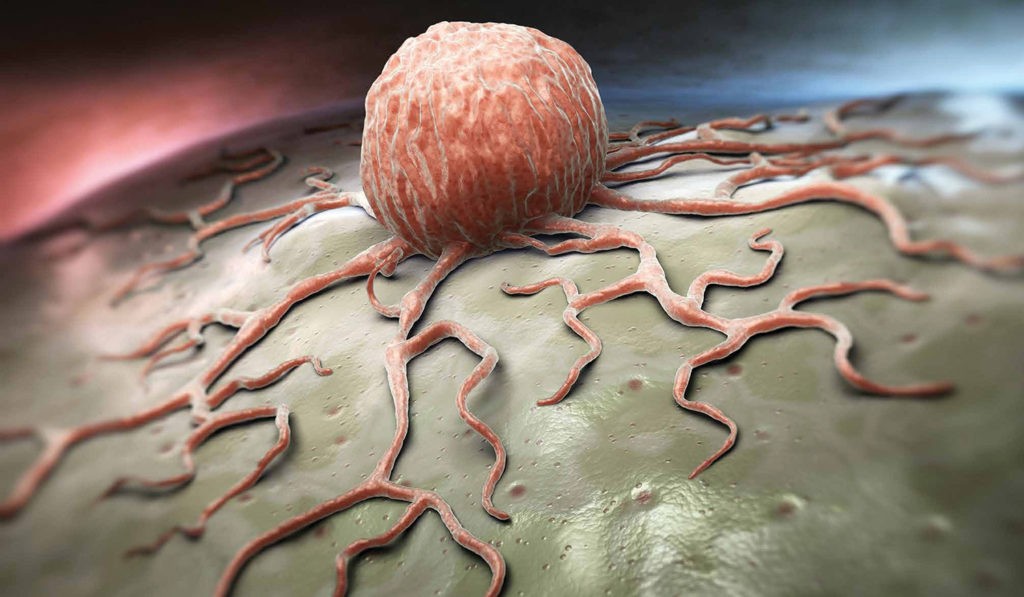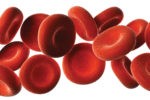Awareness Changes Everything
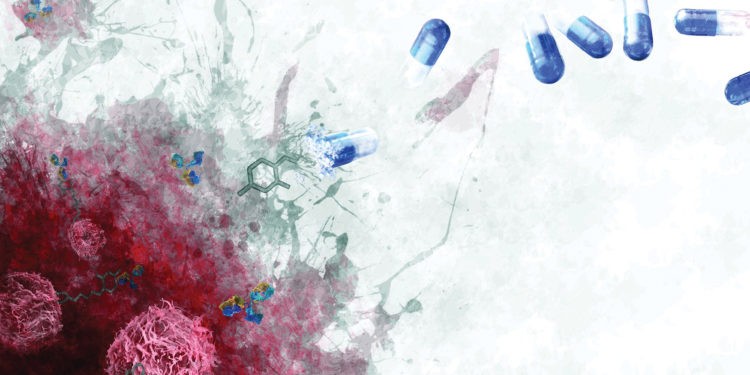
November Brings Awareness for Many Cancers
Let’s be clear. Cancer is a horrible thing that no person should ever have to endure — especially alone. Until recently, however, most people battled their illness privately and without much public understanding. That is hard to imagine now, but just a few decades ago, cancer was spoken about in whispers. It was a different world where fewer people understood their risk factors or how to avoid them. Underfunded researchers fought to find successful treatments for cancers of which few had ever heard. There were far fewer advocates and foundations generating knowledge and funding. Patients, doctors, caregivers, and the public at large were completely separate communities. Only patients and caregivers entered the world of medicine, often of ugly necessity, while others stayed on the outside, afraid to peer into a world they felt powerless to influence.
Raising awareness is one of the core values of Healthy Kansas City magazine because we believe that together, we can create positive change. This issue, we join with others in highlighting Lung, Pancreatic and Prostate cancers. Today, we want to draw back the curtain to uncover the hope, potential, and advances surrounding these cancers. Most importantly, we want every person to know that they have the power of change in their hands.
The Value of Awareness
When most think of Cancer Awareness Campaigns, they think of breast cancer first. Breast cancer foundations have done a spectacular and enviable job of raising money, increasing screenings, and ultimately saving lives. The Breast Cancer Research Foundation, as well as many other cancer foundations, do a wonderful job of providing services and a community platform of emotional, social, and educational support for patients, their family and caregivers. All of these things are of incalculable worth.
As I look outside my office window, I can see a huge flower display arranged in a pink ribbon honoring breast cancer awareness at a pizzeria across the street. I love it, but at the same time I think of all of the cancers not backed by huge organizations and that garner far less attention. That’s what makes awareness campaigns so important.
As cancers go, breast cancer is a big and the most common one in women with over 250,000 diagnosed each year. But with under 41,000 deaths each year, it is far from the deadliest. Lung cancer takes that spot with around 223,000 newly diagnosed and over 155,000 deaths each year.
These statistics reveal some deep truths. Public activism is shaped and motivated by awareness and understanding. The more we know, the more we know we can do. Regardless of the numbers, a cancer diagnosis is devastating, no matter the type. And no matter the type of cancer, all patients and their families can benefit from the research, funding, services, and support of a large, active group of advocates. These things cannot happen, however, without raising greater awareness.
While some may be fatigued with ribbon campaigns and seemingly pointless online challenges, these things hold a deeper value. They draw the community together to become a force of change.
The Fight is Ours
Fighting cancer is a battle. Patients endure rigorous medical protocols that assault the body and their families endure a deep pain that assaults the soul. The medical community has its own battles within the fight to end cancer.
As a society, we universally understand these truths. What we need to understand more deeply is the role everyone else can play in awareness and advocacy.
Every battle has battalions, and every battalion needs a color bearer leading the way. The color bearer would raise the standard high above the smoke of the battlefield, and brave on though without defense. Raising awareness, allows others to take the frontlines and, though they may not have the weapons of battle such as funding or medical skill themselves, they can show others where that frontline exists. Having the standard raised means the fight is still on.
Lung Cancer Awareness
Lung cancer initiates a stealthy assault in the lungs, often undetected for some time. It is, according to the Centers for Disease Control and Prevention, the second most diagnosed cancer in both men and women, and the leading cause of cancer death in the United States.
There are three types of lung cancer; non-small cell, small cell, and lung carcinoid tumor. About 85% of lung cancers are non-small cell lung cancers. Between 10% and 15% of lung cancers are small cell lung cancer which tends to spread more quickly. A quarter of a million Americans will be diagnosed with lung cancer this year and 27% of all cancer deaths are related to lung cancer. Approximately 1 in 15 people will get lung cancer in their lifetime. That is one every 2.5 minutes or 150 seconds.
 Certainly, a disease with such bellicosity deserves to be met full force with an arsenal for a counterattack. Fortunately, according to Dr. Joseph Stilwill, a board-certified, fellowship-trained hematology/ oncology specialist with HCA Midwest Health, we are gaining ground.
Certainly, a disease with such bellicosity deserves to be met full force with an arsenal for a counterattack. Fortunately, according to Dr. Joseph Stilwill, a board-certified, fellowship-trained hematology/ oncology specialist with HCA Midwest Health, we are gaining ground.
“The treatment of cancer is always improving. Treatments are more effective with fewer side effects. We participate in a number of cutting-edge clinical trials that are helping to find the best possible treatments for our patients. Seeing the benefits of these treatments gives me hope that future treatments will continue to advance for all patients,” Dr. Stilwill shared.
Recent clinical trials are of particular interest to Dr. Stilwill, and hold significant potential, he continued.
“I am very excited to see the results of clinical trials looking at a combination of chemotherapy and immunotherapy in patients with small cell lung cancer. This has the potential to substantially improve the prognosis for these patients.”
Until recently, chemotherapy was the only medicine available to treat non-small cell lung cancer. Today, doctors have more weapons in their arsenal with advances in chemotherapy itself as well as additional new medications and protocols to more successfully treat the disease. Doctors today are more likely to use a combination of more than one type of chemotherapy drug which provides better outcomes and reduces some of the complex and difficult side effects such as fatigue, depression, nerve problems, memory problems, or hair loss.
In treating lung cancer today, targeted therapy is used to change the way cancer cells grow and change, as well as immunotherapy which boosts the immune system to better fight cancer. The FDA has recently approved several immunotherapy drugs for lung cancer, including non-small cell. One class is called checkpoint inhibitors because they target the natural checkpoints within the body which trigger how the immune system reacts. The drugs atezolizumab (Tecentriq), durvalumab (Imfinzi), nivolumab (Opdivo), and pembrolizumab (Keytruda) for example, target these checkpoints and remove the immune system’s “brakes” so that it can mount a better attack on tumor cells.
“From robotic surgery, which significantly reduces pain and the amount of time patients spend in the hospital, to treatments like immunotherapy for patients with advanced disease, we are clearly making an impact. Life expectancy has nearly doubled in the last 10 years for those with advanced disease,” Dr. Stilwill noted.
The Importance of Knowing the Risk Factors
One of the most important benefits of raising awareness around lung cancer is highlighting its risk factors. Many people do not know the risk factors or may know only the most common ones, causing them to overlook serious preventable factors.
“While smoking is a risk factor, there are a large number of patients diagnosed with lung cancer every year that have never smoked,” cautioned Dr. Stilwill.
Cigarette smoking is, in fact, the number one risk factor, according to the CDC, and is linked to between 80% and 90% of lung cancers in the United States. People that smoke cigarettes are 15 to 30 times more likely to develop lung cancer than those who do not, and people who quit lower their risk considerably.
Secondhand smoke is another serious risk. When a person breathes in smoke it is just as if they are smoking themselves. In the United States, about two of five adults who don’t smoke and half of all children are exposed regularly to secondhand smoke. Each year, over 7,000 people who have never smoked die from lung cancer. Concerningly, lung cancer is on the rise for non-smokers.
A lesser-known risk is exposure to radon. Radon is a naturally occurring, colorless, tasteless gas that comes from the rocks and dirt and gets trapped in building structures. It cannot be seen or smelled. According to the Environmental Protection Agency, radon is the second leading cause of lung cancer causing about 20,000 cases of lung cancer each year.
There are also common substances that increase risk, including asbestos, arsenic, and diesel exhaust.
Understanding these risk factors give the community a better chance of avoiding them at home or in the workplace, as well as by changing their personal habits by joining a smoking cessation program, for example.
Encouraging Screenings
Early detection is key to the most successful treatment possible. Using the knowledge of known risk factors, those at risk can act on suspicious symptoms or make their physicians aware of their risk. This, in turn, may cause the physician to consider screening.
“It is important to be aware that signs and symptoms of lung cancer should be evaluated in everyone. These include shortness of breath and chest pain,” shared Dr. Stilwill.
He continued, “I wish more people knew about and participated in lung cancer screening. We know that those at high risk from lung cancer can substantially improve their outcome by finding lung cancer as early as possible. Screening involves a low dose CT scan yearly. It is painless and covered by Medicare and most commercial insurance. These patients should really talk to their doctors about it. It could save their life!”
Currently, lung cancer screenings are recommended for individuals between the ages of 55 and 80 and have a history of at least a 30 pack per year history of smoking. A doctor may recommend a test for radon exposure or lung cancer screening for others based on their risk factors, making public awareness about those risk factors critical in early detection.
Raising the Banner for Pancreatic Cancer Awareness
There is an increasing openness about pancreatic cancer, which is good, but is partly due to its climbing ranking among cancer deaths. While the incidents of pancreatic cancer are thankfully rare accounting for around 3% of all cancers, it does take a frightening toll. Just five years ago it was ranked the fourth-leading cause of cancer deaths. Today it is the third and soon to overtake the number two spot currently held by colon cancer.
Similar jumps are being experienced globally. The ranking is a tricky thing, however, and is due in part to advances in screenings and treatments in other cancers which are successfully bringing down the mortality rate in those cancers.
More concerning is that its incidence has crept upward by 0.5 percent annually each year for over a decade in the US, according to the National Cancer Institute. This too, is as complex as it is concerning as more refined testing and imaging can now identify more tumors earlier.
There are two types of pancreatic tumors, either exocrine or neuroendocrine. About 94% of all pancreatic cancers are exocrine tumors, starting in the exocrine cells of the pancreas, and the most common of these is adenocarcinoma. About 6% are neuroendocrine tumors which result from abnormal growth of endocrine cells in the pancreas.
Increased Awareness Fueling Increased Research
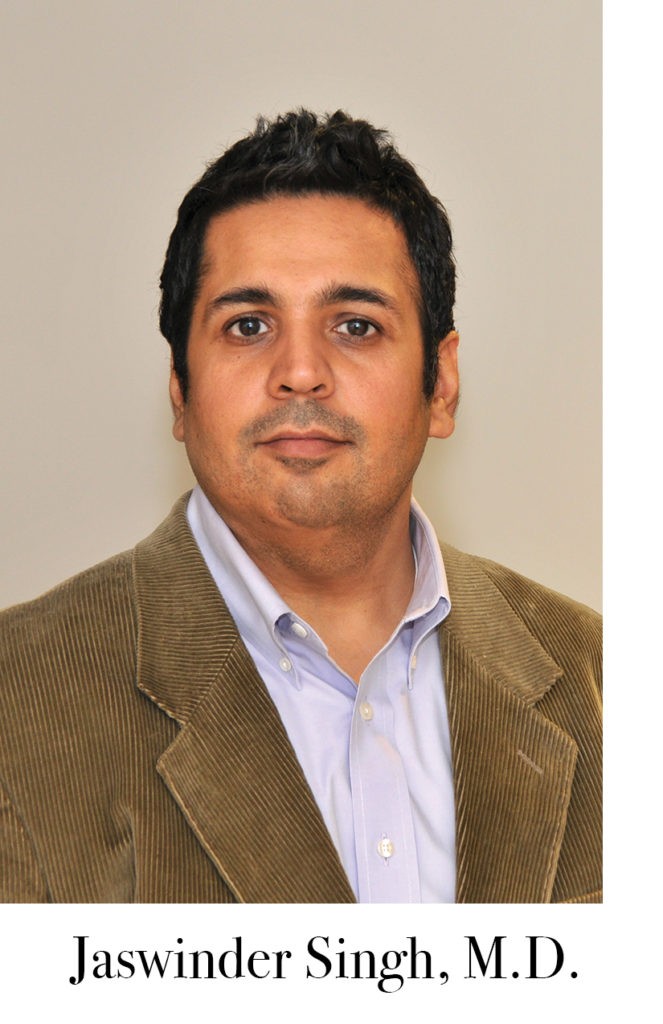 Rising awareness and advocacy is leading to additional research and has led to new treatment therapies and promising new advances, yet there remains much room for increased research, says Dr. Jaswinder Singh, a board-certified hematology specialist in Kansas City, MO.
Rising awareness and advocacy is leading to additional research and has led to new treatment therapies and promising new advances, yet there remains much room for increased research, says Dr. Jaswinder Singh, a board-certified hematology specialist in Kansas City, MO.
“A new FDA approved therapy called Lutathera, which is a peptide receptor radionuclide therapy (PRRT), provides a new avenue for neuroendocrine pancreatic cancer patients.
While there have been some treatment advances for neuroendocrine pancreatic cancer, there have not been very many major advancements for pancreatic adenocarcinoma cancer treatment. Systemic chemotherapy provides the most hope for new treatment options, but clinical trials are slow and there is a need for more trials. The main form of treatment remains surgery and palliative care,” explained Dr. Singh.
There are additional advances on the near horizon, he continued to share.
“A promising new advancement for pancreatic cancer is the Stage III Clinical Trial PANOVA-3 from NOVOCURE. This trial uses a new technology known as Tumor Treating Fields (TTFields). TTFields create low intensity alternating electrical fields throughout the tumor which disrupt the polarity of cells and interfere with the division process of cancer cells ultimately stopping the growth of the tumor. The efficacy of this treatment is unknown, but has been shown to be effective in treating glioblastoma and can provide a potential new treatment for patients with pancreatic adenocarcinoma.”
The survival rates are climbing.
“Over the past decade, the 5-year survival rate for pancreatic cancer has gone from 5% to 9% due to advances in systemic chemotherapy. Moving forward, surgery and radiation will most likely remain the same, while advancements in chemotherapy could provide slight improvement,” Dr. Singh furthered.
The Difficulty of Pancreatic Cancer
No cancer is simple, but pancreatic cancer represents a true enigma. We do not understand the causes, and when it exists it is difficult to find. The symptoms are not always obvious and develop over time. There is no standard test of detection. When it is detected, it is usually in the later stages when surgery is no longer an option.
Tests for early detection are urgently needed, and fortunately some in testing are showing promise, said Dr. Singh.
“While we are far away from understanding the prevention of pancreatic cancer, new methodologies involving liquid biopsies may provide an option for diagnosing pancreatic cancer at an early stage. Physicians and scientists are also working to understand driver mutations and molecular markers that may provide new insights for ‘fingerprinting’ these pancreatic cancer cells,” he said.
Another consideration for those with pancreatic cancer is clinical trials.
“Clinical trials can provide an option for people fighting aggressive forms of pancreatic cancer. In addition, having an optimistic attitude and maintaining a positive outlook can help ease the treatment and manage living with pancreatic cancer,” added Dr. Singh.
Possible Risk Factors in Pancreatic Cancer
Unfortunately, the exact causes of pancreatic cancer are not well understood. Between 5% and 10% of cases are thought to be hereditary, and there may be an increased risk if two or more first-degree relatives have had pancreatic cancer.
Most cases happen randomly or are thought to be linked to risk factors such as obesity, smoking, and age. Persons of African American or Ashkenazi Jewish descent may also be more likely to get pancreatic cancer.
Having diabetes or pancreatitis may also increase your risk, shares Dr. Singh.
“If individuals have new onset diabetes or pancreatitis, they should check to see if it is a result of pancreatic cancer. General practitioners should also consider checking for pancreatic cancer if patients are having weight fluctuation, increased blood sugar, and unknown causes of pancreatitis.”
Pancreatic cancer is one of the deadliest forms of cancer. About 71% of those who develop it die within one year of being diagnosed and the mortality rate is 91% according to the American Cancer Society.
Patients and their families deserve better, and with a collective push to make our communities aware, we can provide better.
Fortunately, awareness and advocacy for pancreatic cancer are already beginning to rise. With the increased awareness the opportunities for research, community support, and resources are also increasing. These gains are important reasons for pancreatic cancer patients and their families to have hope.
Prostate Cancer: More Hope Than Ever Before
Admittedly, any conversation about cancer is a difficult one, especially prostate cancer. If there is resistance in thinking about it, there is even more resistance in screening. That is to be understood. That is something we need to change because when it comes to prostate cancer there are many reasons for optimism. In fact, today we know more about it than ever before, spurring more effective treatments, improved risk reduction, better screenings, and better outcomes.
Most common non-skin cancer in America and the most common cancer in men. Over 160,000 men in the United States are diagnosed annually and 1 in 9, will be diagnosed in their lifetime. Over 30,000 die from it each year.
Prostate cancer is a disease in which malignant cells form in the tissues of the prostate. Almost all prostate cancers are adenocarcinomas, which originates from the glandular cells of the prostate. The disease develops slowly, and there may be no signs of it for many years. Symptoms often only become apparent when the prostate is large enough to affect the urethra.
Understanding the Warning Signs
 According to Dr. Peter J. Van Veldhuizen, a board-certified, fellowship-trained hematology/medical oncology physician serving the Greater Kansas City region, understanding the warning signs is key in early detection and treatment.
According to Dr. Peter J. Van Veldhuizen, a board-certified, fellowship-trained hematology/medical oncology physician serving the Greater Kansas City region, understanding the warning signs is key in early detection and treatment.
“The most common signs are increasing difficulty in urination or in going to the bathroom. The urine stream can be slow or slow to start and it may be difficult to empty the bladder. In some cases there may be pain with urination or pain in the pelvic area,” he explained of the disease.
Other symptoms may include the presence of blood in the urine, frequent urges to urinate at night, or loss of bladder control. It is also sometimes associated with getting an erection, painful ejaculation, and blood in the semen. Any of these symptoms should be discussed with a physician.
What Are the Risk Factors
According to the American Cancer Society, individuals with a family history of prostate cancer have an elevated risk of developing it themselves, as well as those with inherited genetic mutations, such as BRCA1/BRCA2 genes and Lynch syndrome (also known as hereditary nonpolyposis colorectal cancer or HNPCC). Conditions such as prostatitis, inflammation of the prostate, and benign prostatic hyperplasia or BPH, a noncancerous enlargement of the prostate gland also increase the risk. Age and ethnicity also play a role with men over 65 at greater risk and those of African-American or Caribbean descent. There are also avoidable risk factors of obesity and having a diet rich in red meats and high-fat dairy and low in fruits and vegetables.
Man Up, Get Screened
Prostate cancer screenings are one of the screenings most men avoid like the plague and often put off as long as possible. Some would say that most men would sooner take a bullet than voluntarily get a prostate cancer screening. We get it. Ideally, however, men should get screened for prostate cancer before they have any symptoms so that it is detected as early as possible.
Performed at benchmark ages, or spurred by indicators, standard screening includes a digital rectal exam (DRE) test that allows the doctor to check the rectum, pelvis, and lower abdomen for any abnormalities in size, shape, or texture. If any abnormalities are found it may indicate a need for further tests, including a Prostate-specific antigen (PSA) test. In this test, blood is drawn and tested for PSA, a naturally occurring substance found in the bloodstream. In men with prostate cancer, the antigen is overproduced, so there is more of it in the blood. That’s why the PSA test can be a helpful component in screening. However, PSA is made in higher quantities in men who have larger prostate glands, or who have inflammation of the gland, so not all PSA elevations indicate a man has prostate cancer.
Recently, Queen’s University Belfast led the world’s largest study of its kind, studying the effectiveness of a gene expression biomarker, known as Metastatic Assay, which hopes to quickly diagnose the type of prostate cancer. The test analyses the genetics of the tumor enabling clinicians to understand the type of tumor, whether it is a slow-growing or aggressive and if the latter, to what extent. Understanding the biology of the specific tumor can revolutionize how prostate cancer is diagnosed and treated.
Exciting Advances in Prostate Cancer
Depending on how advanced and aggressive the cancer and how far the disease has spread, men are offered various treatments which include hormonal therapies, surgery, radiotherapy, or a combination of treatments. When the disease has spread to the pelvis, conventional therapies can become too risky as happens in around 3,000 men annually.
A breakthrough new treatment could provide treatment and hope to those whose disease has progressed and believed to be incurable, according to the Institute for Cancer Research. The new study found that intensity modulated radiotherapy (IMRT) was able to give a high dose of radiation directly to cancer cells in the pelvis while protecting surrounding healthy tissue, thereby cutting down on side-effects. In the new study on 447 men, 71% of patients with prostate cancer were alive and completely free from disease five years after treatment with IMRT.
More Good News for Prostate Cancer
Nearly 90% of prostate cancers are detected in the early stages and nearly 100% of men diagnosed and treated while the cancer is in the local and regional stages will be disease-free five years later.
As with other types of cancers, with aggressive research we are make exciting steps forward in the diagnosis and treatment of prostate cancer. Recent years have seen the positive culmination of many collective efforts and are on the cusp of even more discovery.
Cancer crosses all the lines to wage war on society. At Healthy Kansas City magazine, we hope to provide a brief glimpse of some of these cancers and highlight how increased awareness helps us exceed cancer’s every assault with even more tenacity and determination.
For more information: American Lung Association; www.lung.org, Pancreatic Cancer Action Network; www.pancan.org and Prostate Cancer Foundation; www.pcf.org.
